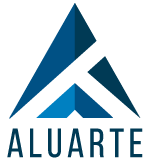- Ingeniería y Servicios Aluarte
- 938 384 2000
- contacto@aluarte.com.mx
14 3 Record Transactions and the Effects on Financial Statements for Cash Dividends, Property Dividends, Stock Dividends, and Stock Splits Principles of Accounting, Volume 1: Financial Accounting
Economic Calendar
agosto 13, 2021Master AWS Cloud Practitioner Exam with Realistic Practice Tests CLF-C01 02 Prep
septiembre 3, 202114 3 Record Transactions and the Effects on Financial Statements for Cash Dividends, Property Dividends, Stock Dividends, and Stock Splits Principles of Accounting, Volume 1: Financial Accounting
The date of payment is the date that payment is issued to the investor for the amount of the dividend declared. After the year-end closing, the board director of company ABC declared a dividend of $ 8,000,000 to all the shareholders. On the other hand, if the company owns between 20% to 50% shares of stock of another company, it needs to record the dividend received as a reduction of its stock investments on the balance sheet. This is due to the company needs to use the equity method where it records its share of the net income of the company it invests as its own income on the income statement.
When the company makes the dividend payment to the shareholders, it can make the journal entry by debiting the dividends payable account and crediting the cash account. When a company declares a dividend, it is essentially creating a liability to its shareholders. This liability is recorded on the balance sheet as a dividend payable account. The amount of the dividend payable is equal to the total amount of the dividend that will be paid to shareholders, multiplied by the number of shares outstanding.
Sometimes, the company may decide to issue the stock dividend to its shareholders instead of the cash dividend. This may be due to the company does not have sufficient cash or it does not want to spend cash, etc. In either case, the company needs the proper journal entry for the stock dividend both at the declaration date and distribution date.
- Large stock dividends and stock splits are done in an attempt to lower the market price of the stock so that it is more affordable to potential investors.
- The existence of a cumulative preferred stock dividend in arrears is information that must be disclosed in financial statements.
- The related journal entry is a fulfillment of the obligation established on the declaration date; it reduces the Cash Dividends Payable account (with a debit) and the Cash account (with a credit).
- In this case, the journal entry at the dividend declaration date will not have the cash dividends account, but the retained earnings account instead.
Only the owners of the 280,000 shares that are outstanding will receive this distribution. The credit entry to dividends payable represents a balance sheet liability. At the date of declaration, the business now has a liability to the shareholders to be settled at a later date. Credit The credit entry to dividends payable represents a balance sheet liability. At the date of declaration, the business now has a liability to the shareholders to pay them the dividend at a later date.
Journal Entries for Withholding Tax
In this case, the dividend received journal entry will increase both total assets on the balance sheet and total revenues on the income statement. If a company has both preferred and common stockholders, the preferred stockholders receive a preference if any dividend is declared. Having the preference does not guarantee preferred stockholders a dividend, it just puts them first in line if a dividend is paid. Preferred stock usually specifies a dividend percentage or a flat dollar amount. For example, preferred stock with a $100 par value has a 5% or $5 dividend rate.
For example, a 1-for-3 stock split is called a reverse split since it reduces the number of shares of stock outstanding by two-thirds and triples the par or stated value per share. A primary motivator of companies invoking reverse splits is to avoid being delisted and taken off a stock exchange for failure to maintain the exchange’s minimum share price. A large stock dividend occurs when a distribution of stock to existing shareholders is greater than 25% of the total outstanding shares just before the distribution. The accounting for large stock dividends differs from that of small stock dividends because a large dividend impacts the stock’s market value per share.
- The debit to retained earnings reduces the company’s equity, and the credit to dividends payable creates a liability.
- The date of record determines which shareholders will receive the dividends.
- A company may issue a dividend payment to shareholders made in shares rather than as cash.
- This usually happens with companies that do not bother to keep a record of the dividend declared and paid.
If cumulative, a note to the financial statements should explain Wington’s obligation for any preferred stock dividends in arrears. Such dividends—in full or in part—must be declared by the board of directors before paid. In some states, corporations can declare preferred stock dividends only if they have retained earnings (income that has been retained in the business) at least equal to the dividend declared. The debit to retained earnings reduces the company’s equity, and the credit to dividends payable creates a liability. The dividends payable account is a current liability, which means that it is expected to be paid within one year. Cash dividends become liabilities on the declaration date because they represent a formal obligation to distribute economic resources (assets) to shareholders.
And of course, dividends needed to be declared first before it can be distributed or paid out. The company makes journal entry on this date to eliminate the dividend payable and reduce the cash in the amount of dividends declared. Assuming there is no preferred stock issued, a business does not have to pay dividends, there is no liability until there are dividends declared. As soon as the dividend has been declared, the liability needs to be recorded in the books of account as dividends payable.
Stock Splits
Both types of stock dividends impact the accounts in stockholders’ equity. A stock split causes no change in any of the accounts within stockholders’ equity. The impact on the financial statement usually does not drive the decision how to prepare and analyze a balance sheet with examples to choose between one of the stock dividend types or a stock split. Large stock dividends and stock splits are done in an attempt to lower the market price of the stock so that it is more affordable to potential investors.
Comparing Small Stock Dividends, Large Stock Dividends, and Stock Splits
The board of directors prefers that all profits remain in the business to stimulate future growth. For example, Netflix Inc. reported net income for 2008 of over $83 million but paid no dividend. At the same time as the dividend is declared, the business will have decided on the date the dividend will be paid, the dividend payment date.
First, there must be sufficient cash on hand to fulfill the dividend payment. On the day the board of directors votes to declare a cash dividend, a journal entry is required to record the declaration as a liability. A company’s board of directors has the power to formally vote to declare dividends. The date of declaration is the date on which the dividends become a legal liability, the date on which the board of directors votes to distribute the dividends. Cash and property dividends become liabilities on the declaration date because they represent a formal obligation to distribute economic resources (assets) to stockholders.
Interim Dividend vs Final Dividend
A dividend is a distribution of profits by a corporation to its shareholders. Shareholders are typically paid dividends in cash, but they may also be paid in the form of stock or other assets. After this journal entry, total assets on the balance sheet and total revenues on the income statement of the company ABC will increase by $5,000.
Therefore, the dividends payable account – a current liability line item on the balance sheet – is recorded as a credit on the date of approval by the board of directors. The correct journal entry post-declaration would thus be a debit to the retained earnings account and a credit of an equal amount to the dividends payable account. A reverse stock split occurs when a company attempts to increase the market price per share by reducing the number of shares of stock.
There is no journal entry recorded; the company creates a list of the stockholders that will receive dividends. For corporations, there are several reasons to consider sharing some of their earnings with investors in the form of dividends. Many investors view a dividend payment as a sign of a company’s financial health and are more likely to purchase its stock. In addition, corporations use dividends as a marketing tool to remind investors that their stock is a profit generator.
As the business does not have to pay a dividend, there is no liability until there is a dividend declared. As soon as the dividend has been declared, the liability needs to be recorded in the books of account as a dividend payable. These stock distributions are generally made as fractions paid per existing share. For example, a company might issue a 10% stock dividend, which would require it to issue 1 share for every 100 shares outstanding. Once the previously declared cash dividends are distributed, the following entries are made on the date of payment. Later, on the date when the previously declared dividend is actually distributed in cash to shareholders, the payables account would be debited whereas the cash account is credited.

